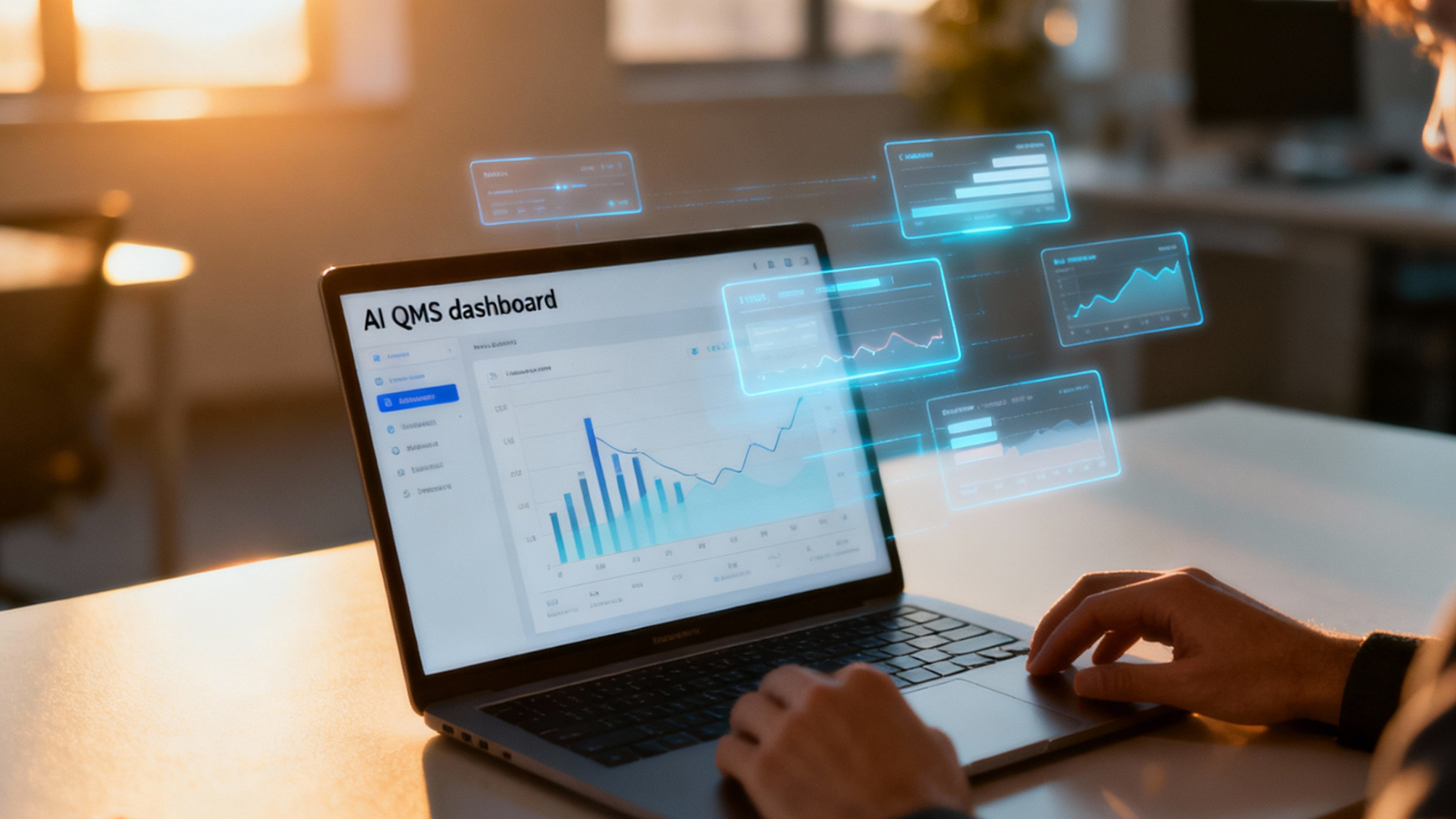The Role of AI in Workplace Safety
As the world continues to evolve, so do the advancements in technology. One of the most incredible developments in recent years has been the integration of artificial intelligence (AI) into various industries. The realm of workplace safety is no exception. With the ability to analyze vast amounts of data and make predictions based on patterns, AI has become a powerful tool in ensuring employees' health, safety, and environment (HSE). In this article, we will explore the role of AI in workplace safety, its benefits, and how it is revolutionizing how we approach HSE.
Understanding HSE in the Workplace
Before delving into the benefits of AI-powered workplace safety, it is essential to understand what HSE encompasses. HSE stands for health, safety, and environment, and it refers to the measures taken to protect employees from potential hazards and ensure their well-being in the workplace. This includes identifying risks, implementing safety protocols, and providing training and education to employees.
The Benefits of Integrating AI into Workplace Safety Practices
Integrating AI into workplace safety practices offers numerous benefits that enhance the overall effectiveness of HSE. Firstly, AI has the capability to monitor and analyze real-time data to identify potential safety hazards and incidents. By continuously monitoring the environment, AI-powered systems can detect abnormalities or deviations from expected patterns, allowing for quick intervention and prevention of accidents.
Secondly, AI improves risk assessment and hazard identification. Traditional risk assessment methods rely on manual analysis, which can be time-consuming and prone to human error. On the other hand, AI algorithms can analyze vast amounts of data and identify patterns that may be invisible to human eyes. This enables organizations to address potential risks and implement preventive measures proactively.
Lastly, AI-driven safety training and education provide employees with personalized and interactive learning experiences. Using AI algorithms, training programs can adapt to employees' needs and learning styles, ensuring maximum engagement and knowledge retention. This personalized approach enhances the effectiveness of safety training and empowers employees to take an active role in maintaining a safe working environment.
AI-Powered Safety Monitoring and Incident Prediction
One of the most significant contributions of AI to workplace safety is its ability to monitor safety conditions in real-time and predict potential incidents. AI-powered systems can be equipped with sensors and cameras that continuously collect data on various parameters such as temperature, humidity, noise levels, etc. AI algorithms then analyse this data, detecting abnormalities or patterns indicative of potential hazards.
For example, suppose an AI-powered system detects a sudden temperature increase in a specific factory area. In that case, it can immediately alert the relevant personnel to investigate the situation. This proactive approach allows for swift intervention before an incident occurs, preventing injuries and damage to property.
Furthermore, AI algorithms can analyze historical data to identify patterns that may lead to accidents. By understanding the root causes of previous incidents, organizations can implement corrective actions and preventive measures to avoid similar occurrences in the future. This data-driven approach improves workplace safety and helps organizations optimize operations and reduce costs.
How AI Improves Risk Assessment and Hazard Identification
Traditional risk assessment methods often rely on manual analysis, which can be subjective and time-consuming. AI-powered risk assessment, on the other hand, offers a more objective and efficient approach. By analyzing vast amounts of data, AI algorithms can identify potential hazards and assess the associated risks more accurately and quickly.
AI algorithms can analyze data from various sources, such as historical incident reports, safety inspection records, and employee feedback, to identify patterns and correlations. This enables organizations to identify previously unnoticed risks and implement preventive measures.
Moreover, AI algorithms can simulate various scenarios and assess the potential risks associated with each. This allows organizations to evaluate the effectiveness of different control measures and make informed decisions to minimize risks.
AI-Driven Safety Training and Education
Training and education play a crucial role in ensuring workplace safety. However, traditional training methods may not always be engaging or personalized enough to convey important safety information to employees effectively. This is where AI-driven safety training and education come into play.
By leveraging AI algorithms, training programs can adapt to employees' individual needs and learning styles. For example, AI algorithms can analyze the performance of employees during training sessions and provide personalized feedback and recommendations for improvement. This individualized approach enhances training effectiveness and ensures maximum engagement and retention of knowledge.
Furthermore, AI-powered training programs can incorporate interactive elements such as virtual reality simulations and gamification, making the learning experience more immersive and enjoyable. This increases employee engagement and allows for practical hands-on training in a safe and controlled environment.
Implementing AI-Powered Workplace Safety Solutions
Implementing AI-powered workplace safety solutions requires careful planning and consideration. Here are some key steps to ensure a successful implementation:
-
Identify the specific needs and goals: Before implementing AI-powered solutions, organizations should clearly define their safety objectives and identify the areas where AI can provide the most significant impact.
-
Evaluate available technologies: There are various AI technologies available for workplace safety, such as machine learning, computer vision, and natural language processing. Organizations should evaluate these technologies and choose the ones that align with their goals and requirements.
-
Data collection and integration: AI algorithms require large amounts of data to train and make accurate predictions. Organizations must ensure they have access to relevant and high-quality data from various sources within the workplace.
-
Collaboration between AI and human workers: AI-powered systems should complement and support human workers rather than replace them. Organizations should ensure effective collaboration and communication between AI systems and employees.
-
Continuous monitoring and improvement: Workplace safety is ongoing, and AI systems should be continuously monitored and improved. Organizations should regularly evaluate the performance of AI algorithms and make necessary adjustments to ensure their effectiveness.
The Future of AI-Powered Workplace Safety
Integrating AI into workplace safety practices is still in its early stages, but the potential is immense. As AI technology advances, we expect even more sophisticated and intelligent systems that proactively identify and prevent safety hazards.
For example, AI algorithms can be trained to recognize human behaviour patterns and detect fatigue, distraction, or intoxication signs. This can help prevent accidents caused by human error and ensure that employees are in an optimal state to perform their tasks safely.
Furthermore, AI-powered systems can be integrated with wearable devices that can monitor the physiological parameters of employees in real time. This can provide early warnings for potential health issues and enable organizations to take preventive measures.
In conclusion, AI-powered workplace safety is revolutionizing the way we approach HSE. By leveraging the capabilities of AI, organizations can enhance safety monitoring, improve risk assessment, and provide personalized safety training and education. However, it is important to remember that AI should complement human workers and not replace them. The future of AI-powered workplace safety holds immense potential, and organizations that embrace this technology will undoubtedly reap its benefits.
Conclusion
Integrating artificial intelligence (AI) into workplace safety practices can revolutionise how we approach health, safety, and the environment (HSE). By leveraging the capabilities of AI, organizations can improve safety monitoring, risk assessment, and safety training and education. AI-powered systems can analyze real-time data, predict potential incidents, and identify previously unnoticed risks. Furthermore, AI-driven training programs offer personalized and interactive learning experiences for employees. Implementing AI-powered workplace safety solutions requires careful planning and consideration, focusing on collaboration between AI systems and human workers. The future of AI-powered workplace safety holds immense potential, and organizations that embrace this technology will undoubtedly enhance their overall HSE practices.











